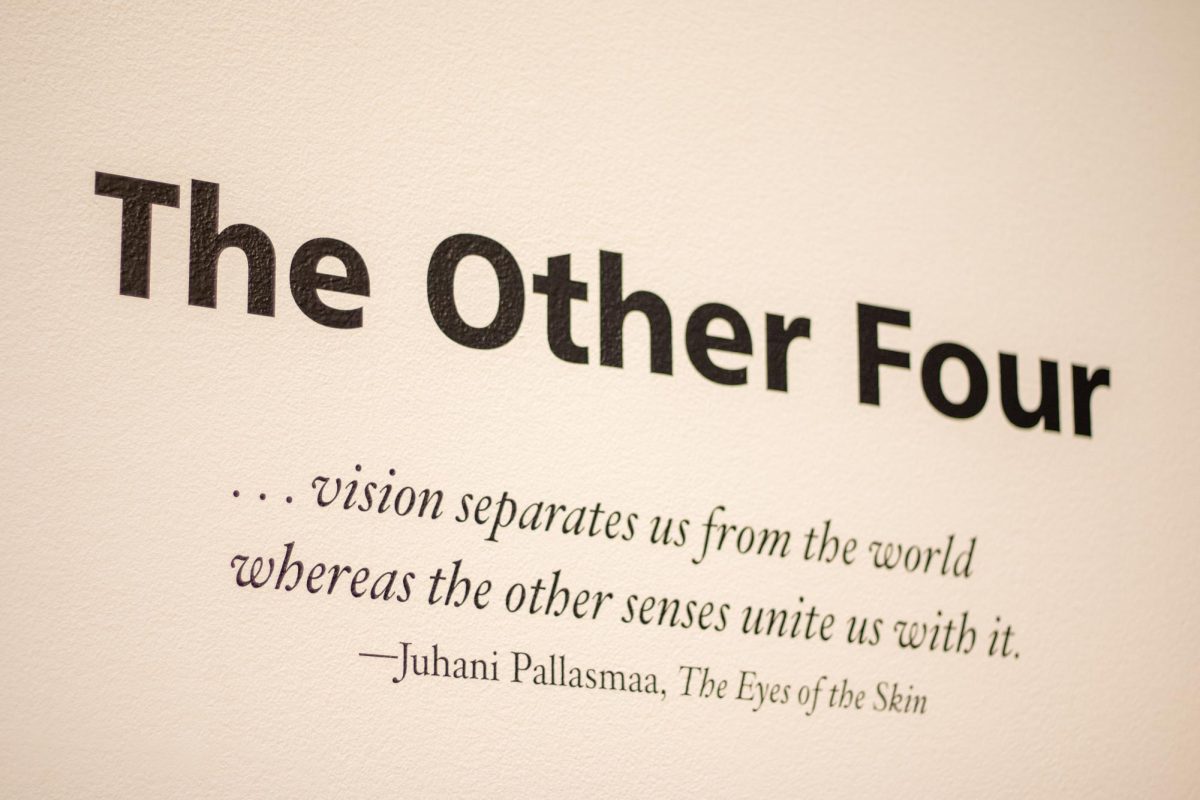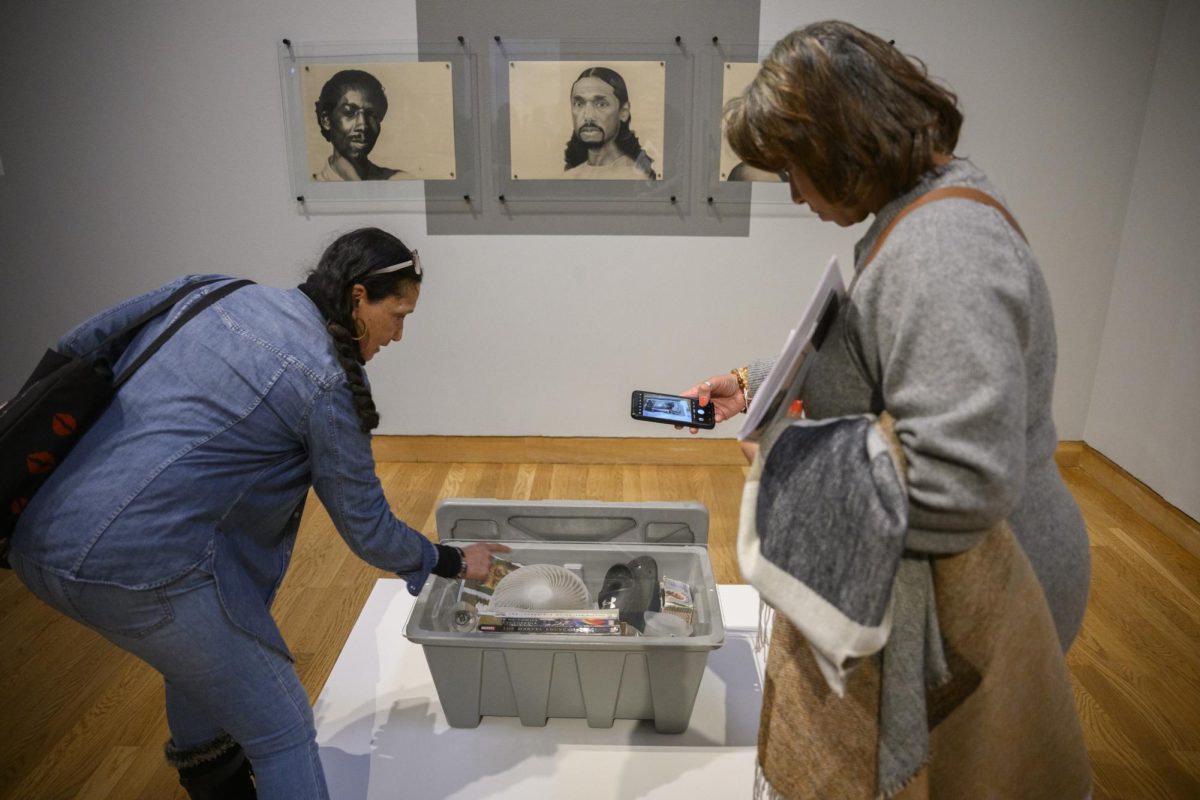“The Other Four,” an art exhibition at the Weisman Art Museum that explores the human senses of smell, hearing, taste and touch, is about halfway through its run before it closes on May 19.
The exhibition, which opened Feb. 9, features 16 works by 21 artists ranging from a heart transmitter device to paintings with accompanying cello music to silicone sculptures that attendees are invited to feel.
John Schuerman, the curator for the exhibition, came up with the idea for the project when he noticed how overlooked the other four senses are in gallery settings. After noticing this, he wanted to invert the idea of a traditional museum experience and create a more experiential way for people to engage with art.
“I noticed how one-dimensional the museum experience typically is, and how, I mean, we call it visual art for a reason, right? So, the dominance of the visual senses is really underscored in a museum setting,” Schuerman said.
An earlier iteration of “The Other Four” premiered in 2019 at the Plains Art Museum in Fargo, North Dakota and included many of the artists that are featured in the version at the Weisman, according to Schuerman.
He added that the current exhibition gave the creators a chance “to refine and improve and advance some of their pieces to be more robust and more interesting for this exhibit.”
Alison Hiltner, one of the artists featured in both versions of “The Other Four,” created “Tethers,” a heart transmitter device that has attendees place a finger on a sensor and feel their own or another person’s heartbeat on a cluster of pumps.
Hiltner’s piece was born after she worked in cardiac laboratories as an artist in residence at the University of Minnesota Medical School. During a surgical procedure in one of the labs, Hiltner got to hold a pig’s beating heart, which led her to the realization of how separated humans are from their own bodies.
“I wanted to replicate a small part of that awe and wonder with the experience to let people kind of start to connect to their physicality as well as others,” Hiltner said.
Another piece featured in the exhibition is “Fossilized Past,” a collaboration between artists Nooshin Hakim and Pedram Baldari and composer Rodrigo Cádiz. According to Cádiz, this is the first time the three artists have worked together after they received a grant from their universities.
“Fossilized Past” is a series of black pipes and speakers that require the attendee to connect a mouthpiece to the contraption and blow. This triggers various sounds, like field recordings the artists captured, industrial noises and Chilean environmental protest audio.
The work is meant to commentate on the environmental impacts of the oil industry on the soil and water of the Great Lakes region and in Chile, where Cádiz works as a professor, Baldari said.
According to Hakim, the artists visited many oil refineries and pipeline sites and collected contaminated samples to document how ruined soil destroys environmental landscapes and their potential, especially in marginalized communities. Hakim said the process was incredibly collaborative, from the people who gave tours of the refineries to the professors who taught them how to take soil samples to the vocalist who is heard in the recordings.
The art piece ties in the idea of community and the power many voices can have when standing up to environmental injustices, Baldari said.
“The project or the sculpture tries to contemplate on the factor of our capability to interrupt and intervene in the dynamic of things in sometimes positive ways,” Baldari said. “Meaning, we have the collective power to talk about these major environmental issues that we are facing.”
Baldari, who is Kurdish, also has a solo piece in the exhibition called “Walling Talks — Talking Walls,” which centers around Kurds and their resistance to the structures that oppress them. The artwork includes mirrors with Kurdish lullabies and resistance songs playing softly behind the walls, as the discovery of these types of music could result in imprisonment, he said.
The crown imperial flower, which is a symbol of resistance and resilience for the Kurdish people, is displayed on the mirrors.
“In our culture, [the crown imperial flower] signifies the land and we believe it grows from the Kurdish blood. Wherever they have killed a Kurd because of their identity, this flower grows,” Baldari said. “That’s the significance of that flower and on its own, it’s a sign of resistance, it’s a sign of promise.”
While “The Other Four” covers a variety of topics, Schuerman has noticed attendees are extremely present with the art and the messages being conveyed. He added that this show is unlike other exhibitions and considers it a more playful and interactive counterpart to traditional museum galleries.
“The Other Four” runs until May 19 at the Weisman Art Museum.














